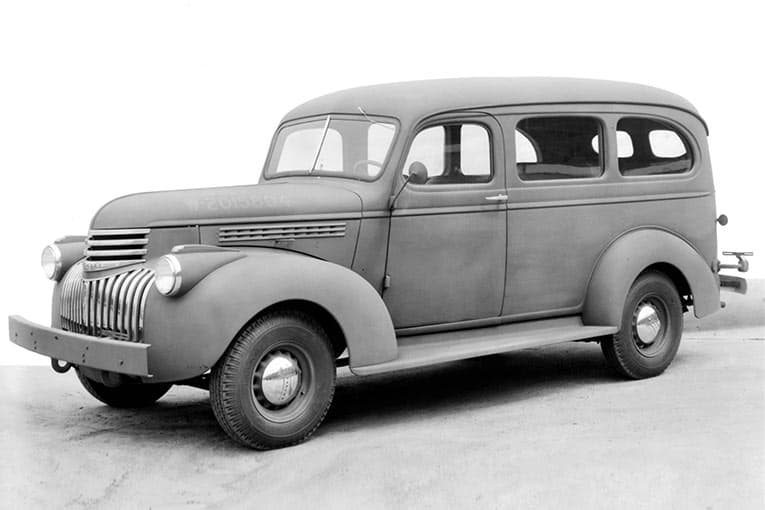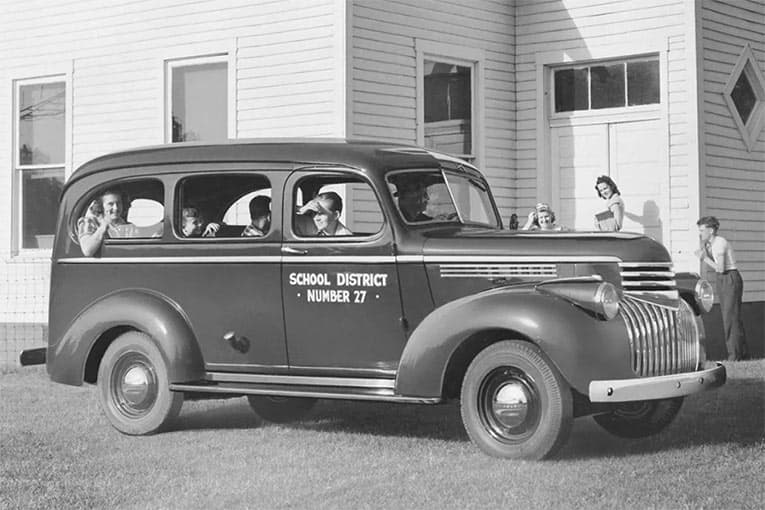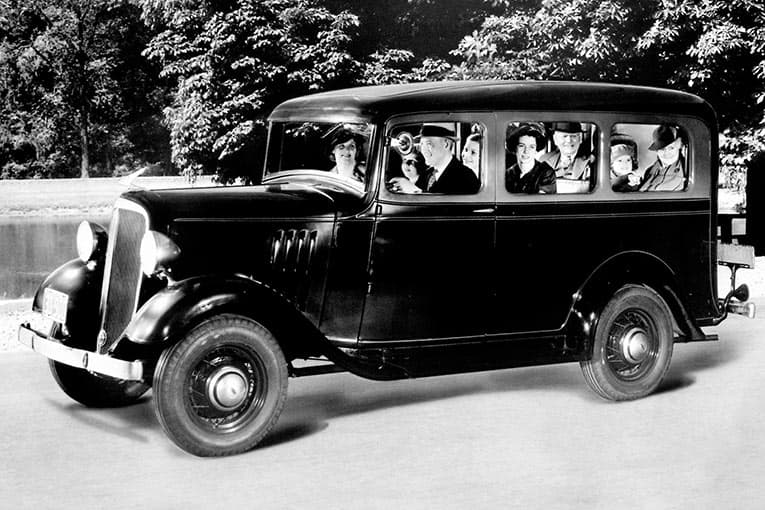The idea for the Suburban was born out of a need for a heavier-duty, truck-based wagon. Through the early 1930s, most manufacturers offered car-based wagons for professional use. Open models with windows and rear seating were known as depot hacks, and were used to ferry passengers and their cargo around train stations and boat docks. Enclosed models, typically without rear seats, were known as sedan deliveries. Bodywork for these early vehicles often consisted of wood sides and canvas tops; and while they were versatile, their car-based chassis and damage-prone bodies were compromises. Chevrolet began experimenting with an all-steel wagon body mounted on a commercial chassis in the mid-1930s, and the Suburban Carryall was launched in 1935.
The Chevrolet Suburban was launched during the Great Depression and in its second model year, it faced a market where unemployment was nearly 17 percent. There were glimmers of hope in the 1936 economy, which were reflected in the approximate 21-percent increase in Chevrolet truck sales versus the previous year. The Suburban accounted for a significant portion of those greater sales, as customers found its eight-passenger, wagon-style configuration ideal for ferrying passengers and work crews. The Suburban was a commercially oriented vehicle and wasn’t marketed to “civilian” customers.

Upgrades in the second year included the addition of hydraulic brakes, which enhanced safety, while changes to the engine brought about 30 percent more horsepower. But it was still a commercial vehicle, after all, and features including a radio, clock, heater and dual windshield wipers were available only as options. Power for the ’36 Suburban came from Chevrolet’s durable inline-six engine that was affectionately known as the Stovebolt engine – a nickname derived from the large, slotted-head fasteners in the engine that resembled those in popular wood-burning stoves. The Stovebolt displaced 207 cubic inches (3.4L), but the changes in 1936 brought a higher compression ratio and a new, better-performing carburetor. Horsepower increased from 60 in 1935 to 79. A new, streamlined exterior styling was introduced in 1937.
1936 Chevrolet Suburban
Body
- Two-door with tailgate
Wheelbase
- 112 inches
Engine
- 207-cubic-inch (3.4L) I-6
Horsepower
- 79 hp / 3200rpm

Torque
- 140 lb.-ft. / 1000-2000 rpm
Transmission
- 3-speed manual
Curb weight
- 3,300 pounds
MSRP
- $685










